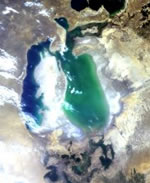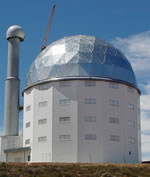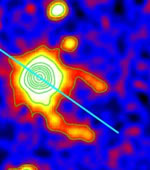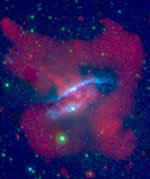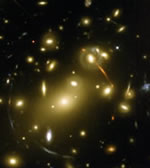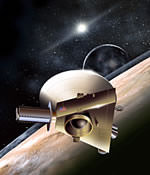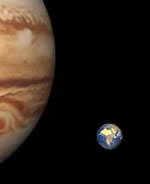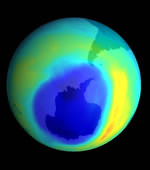
Image credit: NASA
Observations from three NASA satellites have confirmed that the rate of ozone depletion in the Earth’s upper atmosphere is decreasing. The observations were made by SAGE I, SAGE II, and HALOE satellites which scanned the upper stratosphere since 1997. Their observations are consistent with the decline of man-made chemicals in the atmosphere which contribute to ozone depletion. The ozone layer protects the Earth’s surface from sun’s harmful ultraviolet radiation.
NASA satellite observations have provided the first evidence the rate of ozone depletion in the Earth’s upper atmosphere is decreasing. This may indicate the first stage of ozone layer recovery.
From an analysis of ozone observations from NASA’s first and second Stratospheric Aerosol and Gas Experiment (SAGE) and the Halogen Occultation Experiment (HALOE) satellite instruments, scientists have found less ozone depletion in the upper stratosphere (22-28 miles altitude) after 1997. The American Geophysical Union Journal of Geophysical Research has accepted a paper for publication on these results.
This decrease in the rate of ozone depletion is consistent with the decline in the atmospheric abundance of man-made chorine and bromine-containing chemicals that have been documented by satellite, balloon, aircraft and ground based measurements.
Concerns about ozone depletion in the upper atmosphere or stratosphere led to ratification of the Montreal Protocol on Substances that Deplete the Ozone Layer by the international community in 1987. The protocol restricts the manufacture and use of human-made, ozone-depleting compounds, such as chlorofluorocarbons and halons.
“Ozone is still decreasing but just not as fast,” said Mike Newchurch, associate professor at the University of Alabama, Huntsville, Ala., and lead scientist on the study. “We are still decades away from total ozone recovery. There are a number of remaining uncertainties such as the effect of climate change on ozone recovery. Hence, there is a need to continue this precise long-term ozone data record,” he said.
“This finding would have been impossible had either SAGE II or HALOE not lasted so long past their normal mission lifetime,” said Joe Zawodny, scientist on the SAGE II satellite instrument science team at NASA’s Langley Research Center, Hampton, Va.
SAGE II is approaching the 19th anniversary of its launch, and HALOE has been returning data for 11 years. Scientists also used international ground networks to confirm these data from satellite results.
SAGE I was launched on the Applications Explorer Mission-B spacecraft in 1979; the Earth Radiation Budget Satellite carried SAGE II into orbit in 1984. The Space Shuttle Discovery carried HALOE into space on the Upper Atmosphere Research Satellite in 1991.
NASA’s Earth Science Enterprise funded this research in an effort to better understand and protect our home planet. The ozone layer protects the Earth’s surface from the sun’s harmful ultraviolet rays. Ultraviolet radiation can contribute to skin cancer and cataracts in humans and harm other animals and plants. Ozone depletion in the stratosphere also causes the ozone hole that occurs each spring over Antarctica.
Original Source: NASA News Release


